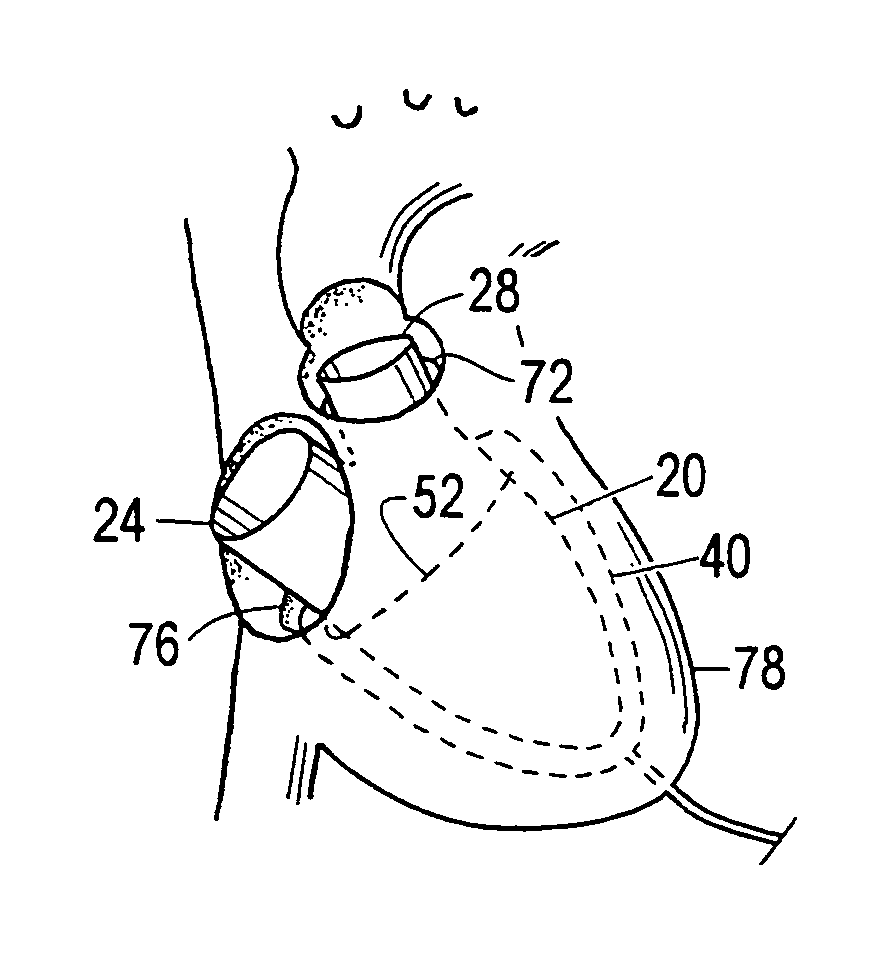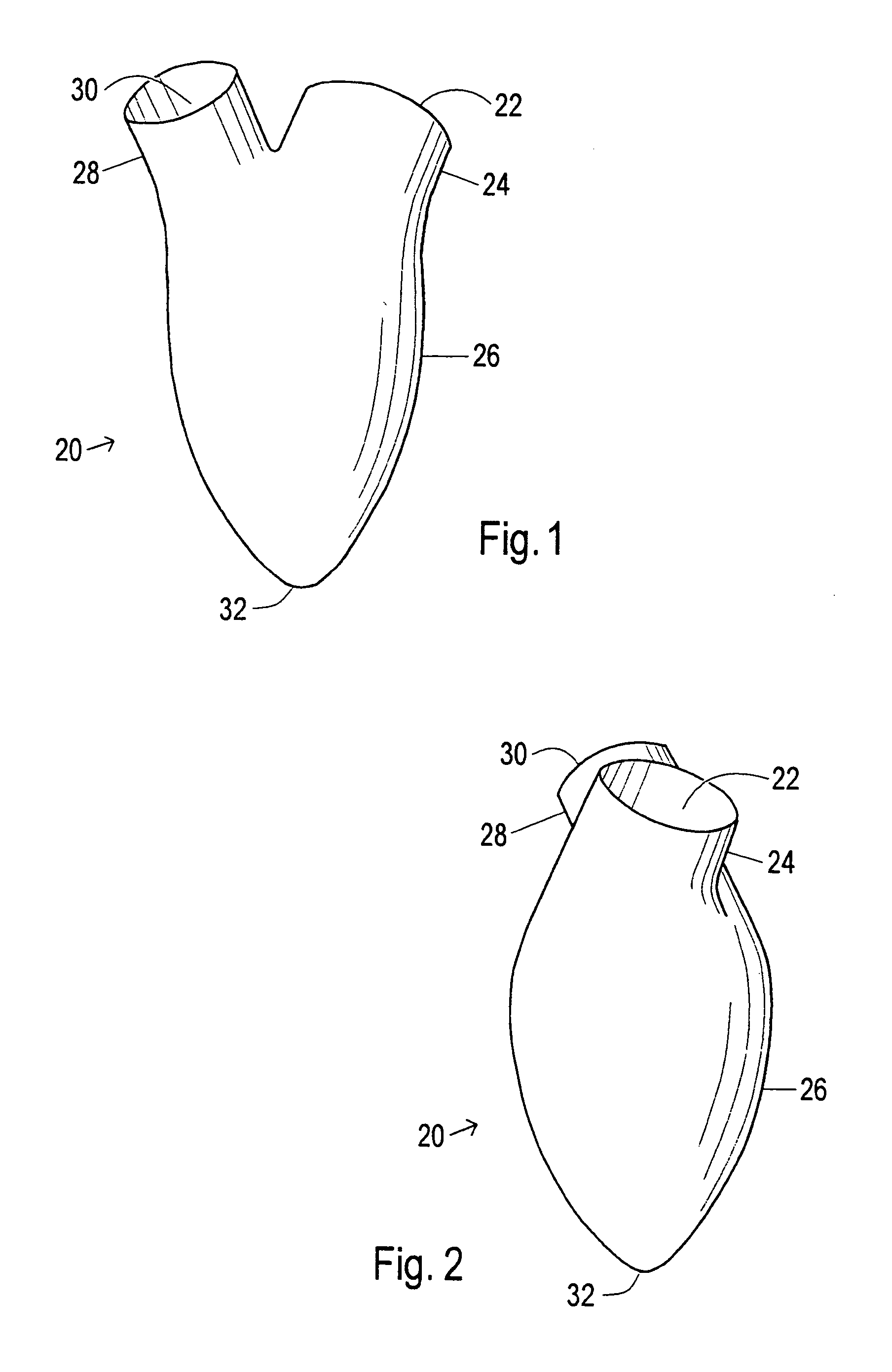Device and method to control volume of a ventricle
a technology of ventricles and devices, applied in the field of devices and methods to control the volume of ventricles, can solve the problems of progressive dilatation of the heart, ineffective mechanism, and deleterious effect of the heart, so as to prevent further enlargement reduce the size of the diseased heart, and limit the volume of blood
- Summary
- Abstract
- Description
- Claims
- Application Information
AI Technical Summary
Benefits of technology
Problems solved by technology
Method used
Image
Examples
Embodiment Construction
[0044]The purpose of the invention is to allow for recovery of a diseased heart. The invention works by limiting the amount of blood that fills a ventricular cavity during each cardiac cycle. The primary device is called a diastolic volume limiting apparatus, or divola for short. The divola is a hollow plastic sac with two openings. The divola is usually placed within the left ventricular chamber of the heart. The divola is soft and compliant, and fills easily with blood to a certain, predetermined volume. When the divola has reached capacity, no further filling is allowed. By limiting filling of the left ventricle, the heart is not stretched by the excessive volume and pressure of blood. This allows for recovery of a diseased heart, or prevents progression or recurrence of heart disease. In some applications, a secondary device, called a volume compensating device or (VCD) may be simultaneously placed into the ventricle to take up excessive space between the ventricle and the prima...
PUM
 Login to View More
Login to View More Abstract
Description
Claims
Application Information
 Login to View More
Login to View More - R&D
- Intellectual Property
- Life Sciences
- Materials
- Tech Scout
- Unparalleled Data Quality
- Higher Quality Content
- 60% Fewer Hallucinations
Browse by: Latest US Patents, China's latest patents, Technical Efficacy Thesaurus, Application Domain, Technology Topic, Popular Technical Reports.
© 2025 PatSnap. All rights reserved.Legal|Privacy policy|Modern Slavery Act Transparency Statement|Sitemap|About US| Contact US: help@patsnap.com



